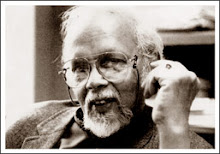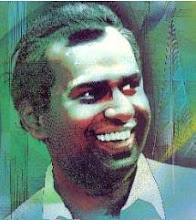 A treasure trove of wisdom and notable drama guru, playwright, actor and director Chandrasena Dassanayake gave his thoughts and hopes in the local theatre field. Hailing from the gem of all Sri Lankan towns known as Ratnapura, Chandrasena said, “Drama was something I was interested in from my university days and back then when we were in hostels, we’d used drama and theatre as a form of entertainment.”
A treasure trove of wisdom and notable drama guru, playwright, actor and director Chandrasena Dassanayake gave his thoughts and hopes in the local theatre field. Hailing from the gem of all Sri Lankan towns known as Ratnapura, Chandrasena said, “Drama was something I was interested in from my university days and back then when we were in hostels, we’d used drama and theatre as a form of entertainment.”
Attending boarding school at a young age, he went to the Karawita Central College and studied right up to SSC (Secondary School Certificate) which is equivalent to the OL. “I then went to the Seevali Central College to do my HSC (Higher School Certificate) and then passed my UE (University Entrance) exam” he said. Thereafter, he went to the University of Peradeniya to read for his General Arts degree where he met his future wife, Daisy who was a year junior to him.
Coming from a family of 3 sisters and 4 brothers, Chandrasena’s father was a hotel proprietor. “Even though my family (my brothers, sisters and parents) hasn’t seen any of my productions, they were my most loyal supporters” said Chandrasena. He is father to three sons who are all abroad in Bangladesh, Australia and the U.S.A. and they are his critics. “Even though none of them followed my dramatic trait, I would let my children comment on my drama and they would be honest about it and in turn, appreciate it better,” he said.
During his schooldays, he was an ardent follower of the drama circles making his first appearance in ‘Vijaya-Kuveni’ in 1948 and thereafter he acted in ‘Mahalu Gayakaya’ in 1957. Other notable productions he was popular in were ‘Ratarang’ in 1959, ‘Elova Gihin Meloya Ava’, ‘Riders of the Sea’ in 1960, Anatole Frances’ ‘Dumb Wife’ (directed by Basil Mendis) which was adapted into Sinhala by Namel Weeramuni called ‘Golu Birinda’. As a make-up artist and costume designer, he helped in ‘Nariugula’, ‘Sakkay Disti’, ‘Kendan Gedarata Ada’ and Prof. Sarathchandra’s ‘Maname’, ‘Ekata Mata Hina Hina and ‘Wellavehum’.
 Chandrasena made his first play in 1964 which was called ‘Hemada Niyan’ and it won first place at the all-island drama festival.
Chandrasena made his first play in 1964 which was called ‘Hemada Niyan’ and it won first place at the all-island drama festival.
In 1966, he went to produce ‘Aandi Tikai Ambalamai’ which is a drama that ridicules the United Nations. He compares the UN with an ‘Aandi-gathered Ambalama’.
Different countries were given names (according to dramatist) to highlight their inherent characteristics. “It was rather controversial and it was censored at places but was a popular drama as we did 1200 shows all across the country,” he said. It went on to win first place at the all-island drama festival in 1966.
In 1966, he went on to produce ‘Pothaka Satahan’ which was a Sinhala version of Anne Frank’s Diaries by highlighting in a play of about one hour. “It was a contrast of two worlds with my drama because in Aandi Tikai Ambalamai’ I was talking about the UN and in Anne Frank, the consequences and sufferings of war. “I even did a play about monkeys and apes because they imitate people and it was a nice idea to put it in a play” he said. He then produced ‘Sakkara Distiya’, ‘Vaanarayo’ for the ANCL Lassana Drama Festival in 1967.
“The reason why I love drama and its become my lifestyle is that it is a lively and wonderful type of entertainment. Whether it is the cast, the stage or just the script, the ability to recreate an experience and make people think about a play is a significant impact on society” said Chandrasena.
In the course of his illustrious career, Chandrasena held positions in the Ceylon Traffic Board, Vidya Lanka and was even the Director General of the Sri Lanka Film Corporation. Chandrasena also held the renowned position of Sri Lankan President for the International Assitege Association for Youth and Children. “I was the President of the Children’s Drama Panel (under the Arts Council) where we changed the school drama festival into the children’s drama festival to make it more popular, we tied up with the Munich Children’s Theatre Company to bring some German plays and even held drama workshops islandwide,” he said.
In 1973, he joined together to join the Germans to bring two plays encompassing West Germany and East Germany. “I joined with a West German counterpart called Dr. Norbert J. Mayor who did a play with me called ‘Stokkerlock Und Millipilli’.
 “In 1975, I adapted a popular East German children’s drama to Sinhala called ‘Tikiri Manike’ where a director called Hans Dieter Smidt and a stage designer, Otta Keyler helped me produce the drama which was held in association with the Goethe Institute”. He further commented, “Even though we didn’t speak the same language, it was phonetics that made me understand them.” His finale of theatre fame culminated in 1971 when he directed ‘Rankanda’ inspired by George Bernand Shaw’s ‘Pygmallion’.
“In 1975, I adapted a popular East German children’s drama to Sinhala called ‘Tikiri Manike’ where a director called Hans Dieter Smidt and a stage designer, Otta Keyler helped me produce the drama which was held in association with the Goethe Institute”. He further commented, “Even though we didn’t speak the same language, it was phonetics that made me understand them.” His finale of theatre fame culminated in 1971 when he directed ‘Rankanda’ inspired by George Bernand Shaw’s ‘Pygmallion’.
Highlighting the importance of children’s drama, Chandrasena recently launched a book called Lama Natyakaranaya to help drama teachers in teaching children about theatre and amateurs who need to learn more about the subject.
“In order to make the child a good citizen of our country, we use knowledge-based, community theatre which would show them how to behave properly and lead a good life” he said. He explained that even UNICEF has started a project to introduce homeless children into drama so that they would learn how to be useful to society. “At the moment, there are about 45,000 children who are willing to learn drama in Kurunegala but are helpless due to the lack of teachers” he said.
Chandrasena said that drama is a vital tool to understand child psychology, a medium understanding for the child and a form of entertainment. “The area of children’s drama is yet to be fully elaborated and there is a dearth of drama teachers to teach proper dramatic aspects to children.
It is the most important tool to teach a child because they will carry our generation forward so we should groom them properly” concluded Chandrasena Dassanayake.




































No comments:
Post a Comment